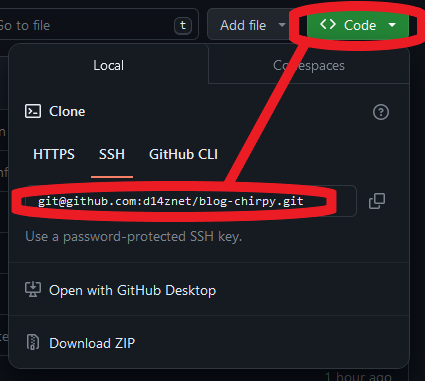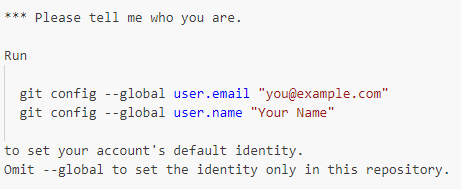Initializing new local repo and cloning from remote source
Initializing new local repo and cloning from remote source
I already have a remote repository on GitHub, now I’d like to work on it also from my local Windows machine.
Make sure you have Git installed!
Set up and initialize local repository
- Navigate to the path you’d like to create the local repository and create a folder for it:
1
2
3
cd C:\Users\user\github
mkdir .\localrepo
cd .\localrepo
- Initialize your new local repository with
git init.
Create SSH keys for your local machine
- Open the terminal and start the SSH Agent on the background:
ssh-agent s - Create a new public-private key pair for your local machine:
ssh-keygen -t rsa -b 4096- By default,
ssh-keygenwill store your keys underC:\Users\user\.ssh\. During prompt, you can specify another path though. - It is recommended to protect your keys with a passphrase!
- By default,
- Go to
GitHub > Settings > SSH and GPG Keysand create a New SSH Key. - Output your public key with
cat C:\path\to\keys\pubkeyand paste the content into GitHub. Save your new key. - On the terminal, load your new public key into the SSH Agent:
ssh-add C:\path\to\keys\pubkey
Clone remote repository via SSH
- On GitHub, open your repository and go to
Code > Clone > SSH. Copy the snippet into your clipboard:
- On your local terminal, navigate to the local repository and run
git clone git@github.com:your-github-user/your-remote-repo.git. - GitHub will check if the provided public key is authorized to use the remote repository. The contents of your remote repository will start propagating into your local repository.
[Optional] Make a test commit from your local repository
To make sure everything went right and synchronization works as expected, we can create a new file in the local repository and then commit it to the remote one.
- [Also optional] On your local repository, open a terminal and run
git pull. As we didn’t change anything so far, the output will tell us that everything is already up-to-date. - Create a new file or modify an existing one. Save your changes and add the file to Git:
git add /path/to/file. - Create a commit:
git commit -m "Test commit" - If you didn’t set up a user name and e-mail yet, Git won’t commit the changes. The output on terminal is pretty self-explanatory on what you need to do - simply follow the instructions and commit the changes again:
- Finally, push the changes to the remote repository with
git push.
This post is licensed under CC BY 4.0 by the author.

